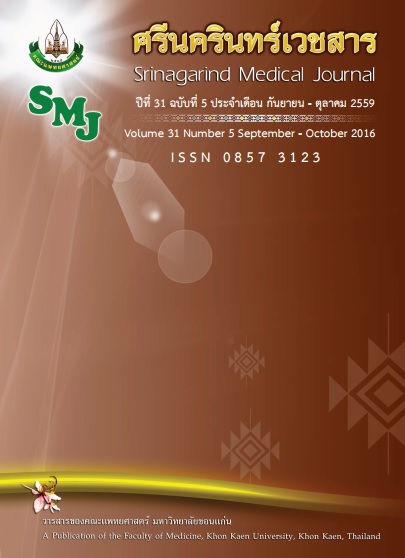Application of using Blood Neutrophil to Lymphocyte Ratio for Prognosis
Abstract
White blood cells play role in the immune system of our body. Number of white blood cell types varies according to the patho-physiological conditions. Recently, the neutrophil to lymphocyte ratio (NLR) has been used as a marker related to the clinicopathological features of patients. This review summarized the accumulating reports of using NLR in patients with gastric cancer, cholangiocarcinoma, infectious diseases, e.g., sarcodiosis and pulmonary tuberculosis, hepatitis, complications of diabetes mellitus, heart and coronary diseases, and obesity.
NLR has been used in various purposes. Most of the studies reported the high NLR values and poor patient outcomes. The sensitivity, specificity and accuracy of using NLR are varied based on the association of NLR and the particular diseases. As NLR can be calculated from the routine blood analysis, easily accessible and low cost, it is useful for the investigation that needs immediate diagnosis or primary evaluation. The appropriate cutoff of an NLR,however, should be evaluated in the specified patients before use. It is suggested to use NLR in combination with the clinical findings prior to the further invasive and costly investigations.




